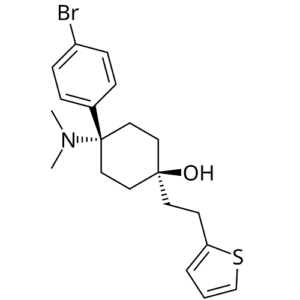Trifluoromethyldeschloroketamine (TFMDCK) is a research chemical belonging to the arylcyclohexylamine class, closely related to dissociative anesthetics such as ketamine and deschloroketamine (DCK). It is known for its action as an NMDA receptor antagonist, meaning it inhibits the NMDA receptor in the brain, leading to dissociative and anesthetic effects.
Key Characteristics of TFMDCK:
- Chemical Structure: TFMDCK is a modified analogue of deschloroketamine, featuring a trifluoromethyl group, which may influence its potency, receptor binding, and pharmacokinetics.
- NMDA Receptor Antagonism: Like other compounds in the same class, TFMDCK blocks NMDA receptors, disrupting glutamate signaling and inducing dissociative effects.
- Pharmacological Effects: The compound is thought to produce dissociative sensations, altered perceptions, and potential anesthetic properties.
Research Applications:
TFMDCK is primarily studied in laboratory settings for:
- Neuropharmacology: Understanding the effects of NMDA receptor antagonism on the central nervous system.
- Structure-Activity Relationships (SAR): Exploring how modifications, such as the addition of a trifluoromethyl group, impact its activity.
- Toxicology Studies: Examining the safety and potential side effects of arylcyclohexylamine derivatives.
Important Information:
TFMDCK is strictly intended for research purposes and is not approved for human or veterinary use. It should only be handled by qualified professionals in controlled laboratory environments.





Reviews
There are no reviews yet.